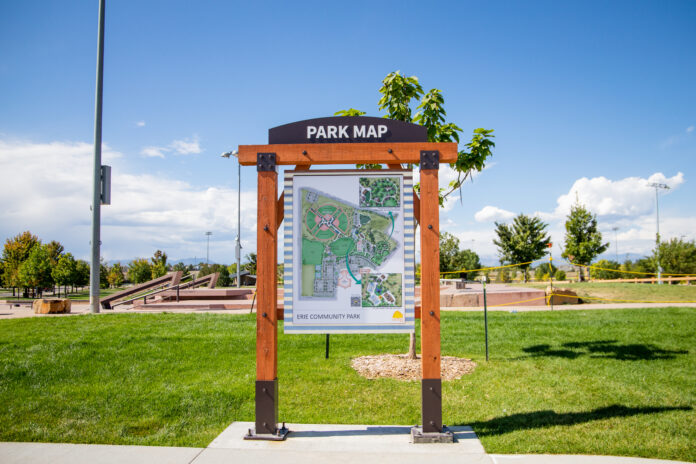You already know this if you’ve ever gotten lost while hiking. The dread of knowing you are lost, wondering if you’ll make it back to your car before sunset, is unforgettable.
You also don’t forget the sheer relief of discovering a trail marker, and then another, and then – gloriously—the sign pointing to the lot where you parked your car. Civilization is nigh, and now you’re looking forward to Chinese takeout on your couch instead of “cowboy camping” and eating weird mushrooms from a damp log for dinner.
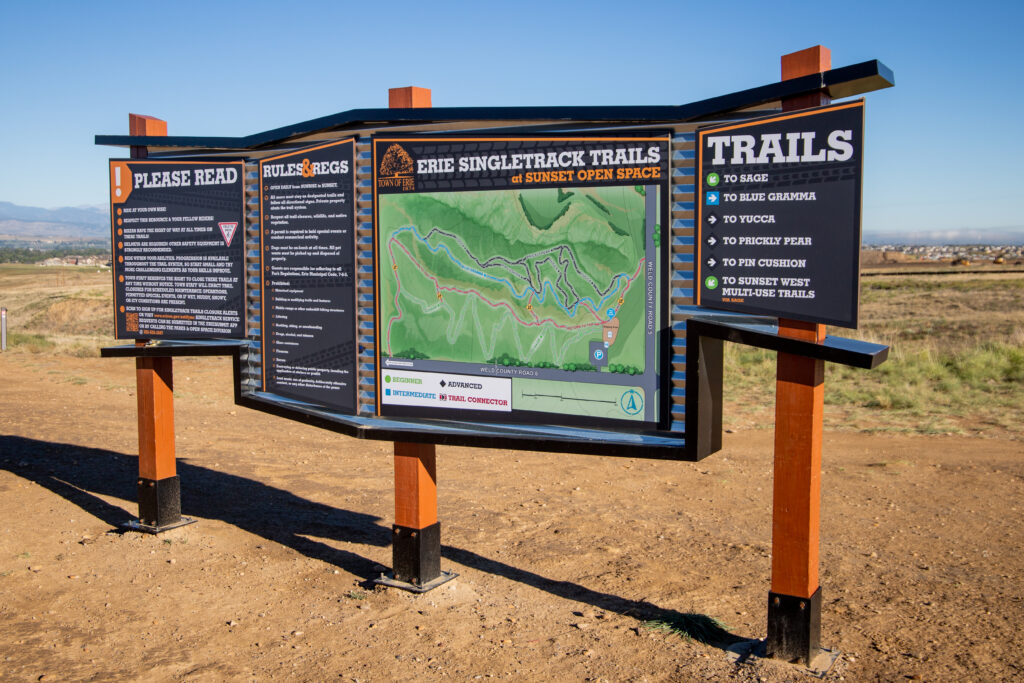
While that’s an extreme example of what can happen if trails are poorly marked, signmakers still have great responsibility when they are contracted for wayfinding solutions that help folks navigate the great outdoors, no matter where.
The Town of Erie, Colorado understood this when it tapped Broomfield Sign Company to design, manufacture and install the wayfinding system for its parks and singletrack trails, which offer 3.15 miles of trails for bike riders seeking a downhill riding experience with rollers, jumps and tabletops.
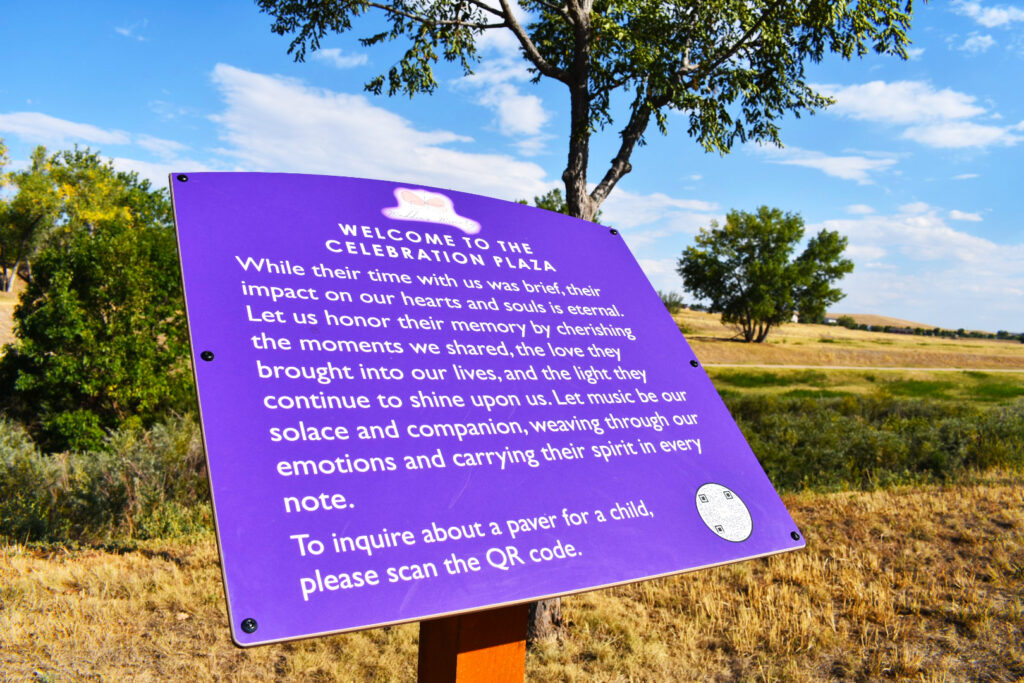
Erie’s goal was to clearly identify the trails and provide guidance to adventuring patrons through a network of monument signs, informational boards and vertical trail markers—all crafted to withstand the northern Colorado elements while blending seamlessly with the natural landscape.
“They aren’t the most complex signs, but there were a lot of steps and elements that went into making them,” Broomfield, Colorado-based BSC CEO Joe Landin says. “All the woodwork, high-pressure laminate panels, the galvanized steel, the clear coats, the digital prints on the wayfinding elements—there were many different materials and techniques that went into [the project].”
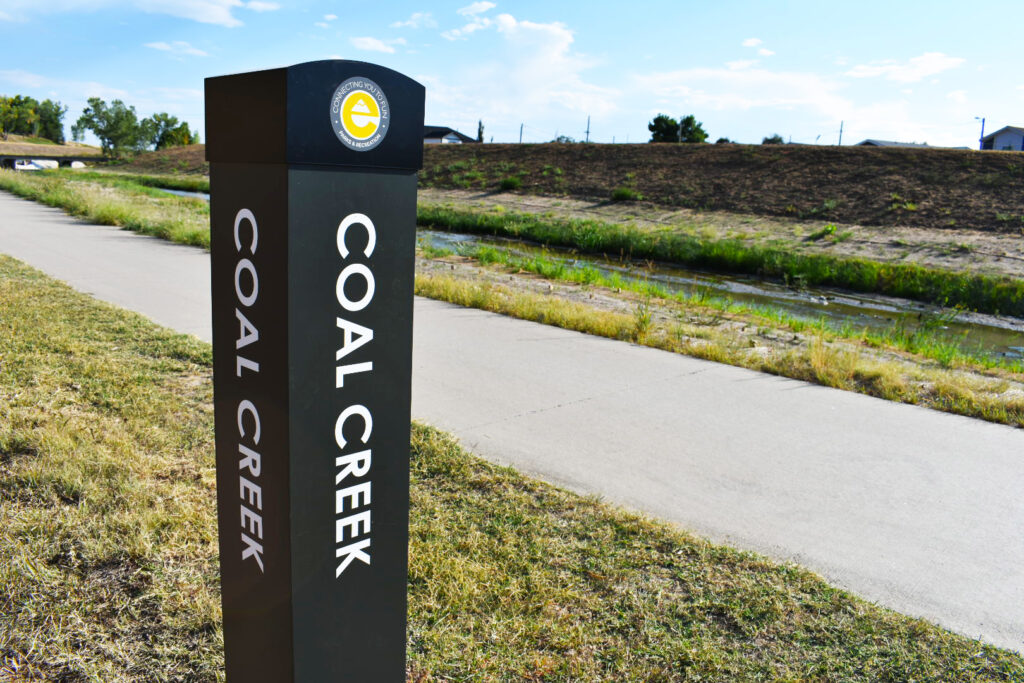
Installation Ingenuity
The Town of Erie allowed BSC to tackle this diverse signage system in phases. This gave BSC more time for planning and collaboration with the town’s architectural and design staff, to the benefit of all stakeholders.
“Usually [a wayfinding job] is more hectic and there’s more room for error, either with the planning or the execution,” Landin says. “We [were] able to take the project in chunks and do everything right, and that’s what made it successful.”
Monument signs for Erie’s park entrances came first. They’re emblazoned with the town logo and combine high-pressure treated cedar with corrugated galvanized steel, conveying the manageable ruggedness that lies beyond. That aesthetic was carried throughout the project, though BSC saw fit to integrate more aluminum for the signage at the bike trails.
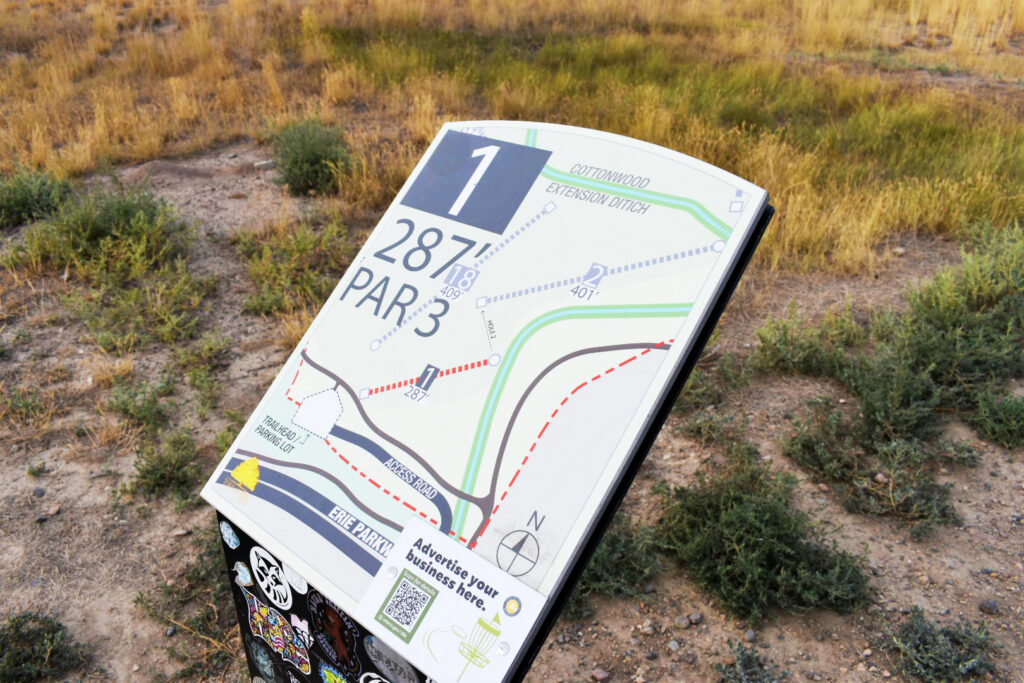
Durability and graffiti resistance were also high on the client’s wish list. To achieve these qualities, BSC used iZone high-pressure laminate panels and Matthews Paint finish, then clear-coated every sign to protect against fading—and thwart anyone with mischief on their mind.
Design and fabrication went off without a hitch. Installation, however, tested BSC’s logistical ingenuity. Gaining access to the installation sites was the biggest challenge. Since the trails are singletrack width and not designed for navigation by vehicle, it’s not always possible for heavy equipment to get where it needs to.
BSC resolved this by outfitting a flatbed truck with a concrete mixer, a 300-gallon water tank, a mini skid steer and a tow-behind auger. The skid steer, designed to fit into tighter spaces than standard equipment, allowed the installation crew to negotiate the narrow, rough terrain and dig holes where needed, all while hauling water to remote locations to mix concrete for securing the posts. The result was what Landin calls a “mobile installation plant.”
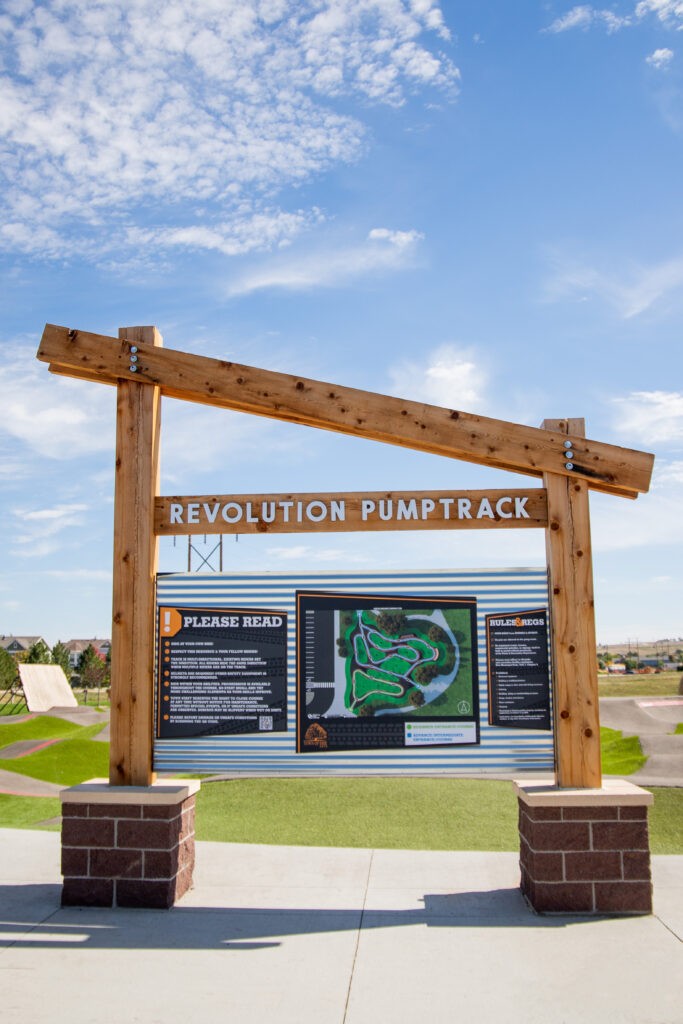
Digging the holes themselves was another issue. “The ground out there was really tough. It wasn’t easy in certain areas, particularly where the trail marker signs were located,” he recalls. BSC’s solution was an auger bit attachment, helping installers efficiently break the stubborn soil and bore uniform holes for the posts.
‘The Key to Victory’
For a multi-phase wayfinding project with public safety on the line, BSC could’ve had other problems to address besides tricky installations. Those problems were avoided because of foresight, strong communication, and above all else, planning.
“The biggest thing is to be organized—that’s the key to victory here,” Landin says. “When you have different stakeholders, and everyone has an opinion on how to execute the project, and everyone is responsible for certain parts of it, it’s super important to be organized. … We made sure our bid matched the artwork and that everyone was on the same page. You have to be able to say how much everything costs and what you’re going to do so there’s no finger-pointing down the road.”
BSC’s preparation included site surveys, top-view site maps and diagrams showing exactly where each sign would go, which direction it would face and how many signs were needed. This level of detail ensured there were no unwelcome surprises along the way. “Don’t cut corners because it will only bite you in the end,” Landin adds.
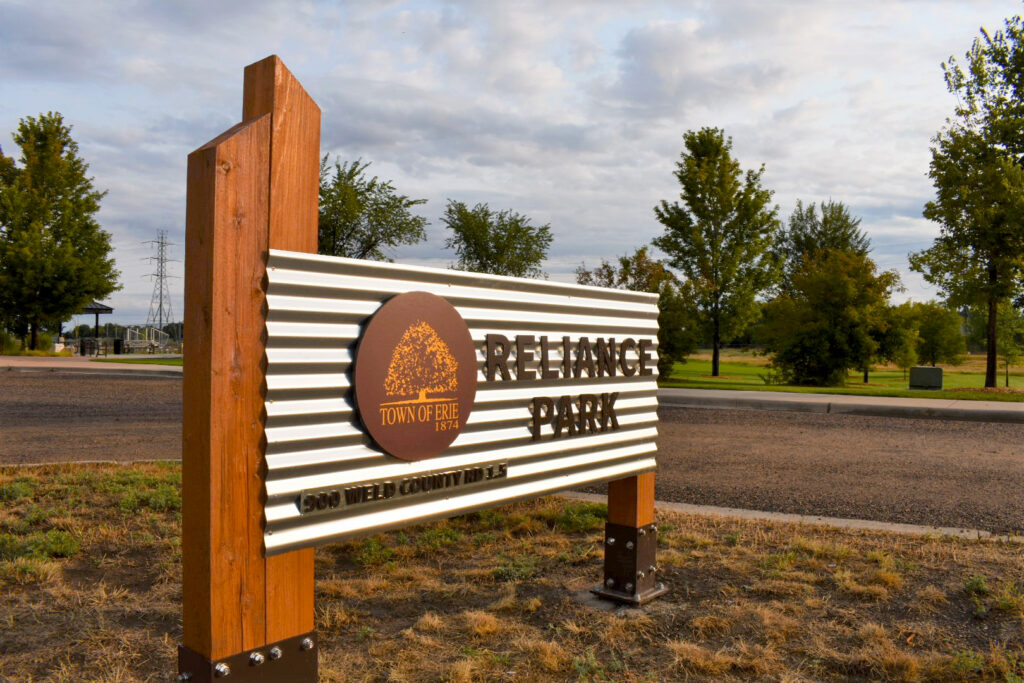
BSC’s bidding and planning process may command substantial time and effort, but it’s a major reason why the company—celebrating its 25th anniversary this year—was able to land this municipal contract and earn the client’s trust.
For sign companies hoping to achieve similar success, Landin has straightforward advice. “You have to understand what the client needs and provide guidance. Then you have to be able to tell the main stakeholder, ‘From our past experience, we recommend this and here’s why.’ Your job is to guide [clients] to the right solution that works within the budget and also meets their needs from a technical standpoint and a visual standpoint,” he says.
Indeed, patrons of Erie parks are welcomed by seamless signage that not only complements the natural surroundings, but also clearly identifies points of interest and guides their exploration. The result is a wayfinding system that reminds us why the best adventures are often those in which the path is clearly marked.


